#Solar PV Cable
Explore tagged Tumblr posts
Text
Best Quality Solar PV Cable DC type | Free Shipping UK
Solar Photovoltaic (PV) Cable is a specialized cable designed specifically for use in low-voltage DC circuits of solar power systems. It is used to connect solar panels, charge controllers & other components within the system. These cables are designed to handle the specific electrical & environmental demands of solar power systems, including extreme temperatures & UV radiation. To ensure reliable & long-lasting performance. They have durable insulation and a protective outer jacket which offers resistance to moisture and abrasion too. Properly installed & maintained Solar PV Cable are crucial for efficiency. It's the safe operation of a solar power system.
Applications:
Solar PV Cable is commonly used in some of the following applications:
● Photovoltaic (PV) power systems, for connecting solar panels to the inverter.
● On-grid and off-grid solar energy systems, for transmitting DC power from solar panels to storage systems or inverters.
● Large-scale solar power plants, for connecting arrays of solar panels to a central inverter.
● Residential and commercial solar installations, for connecting rooftop or ground-mounted solar panels to the electrical system.
● Mobile solar power systems, for powering portable solar-powered devices and equipment.
● Solar water pumping systems, for powering DC water pumps used in irrigation and livestock systems.
● Solar street lighting systems, for powering DC streetlights. Solar-powered electric vehicles, for charging the battery pack of electric vehicles from a solar panel.
● Solar-powered boats and RVs, for powering DC electrical systems in boats and recreational vehicles.
● Solar microgrids, for connecting multiple solar panels and energy storage systems to provide a decentralized source of electricity in remote or off-grid communities.
Construction-
● Conductors - Its typically made of stranded copper wire to transmit the DC electricity generated by the solar panels.
● Insulation - Made of cross-linked polyethylene (XLPE). It protects conductors & prevents electrical shock.
● Jacket - The jacket is the outermost layer of the cable and protects it from damage and UV exposure & is made of UV-resistant material such as PVC.
● Shielding - For an additional layers of shielding like aluminum or copper tape, to protect against electromagnetic interference (EMI) and radio frequency interference (RFI).
Specifications-
● Voltage Rating: Typically rated for low voltage, usually 600V or 1000V.
● Conductor Material: Usually made of stranded copper to reduce resistance and increase flexibility.
● Insulation Material: Typically made of a durable material such as cross-linked polyethylene (XLPE) to withstand extreme temperatures and UV radiation.
● Outer Jacket Material: Typically made of a UV-resistant material to provide protection against the elements and improved resistance to abrasion.
● Wire Gauge: Available in a variety of wire gauges to accommodate different current requirements.
● Temperature Rating: Usually rated for use in temperatures ranging from -40°C to 90°C.
● Standard Compliance: Typically compliant with industry standards such as UL 4703, TÜV 2 PfG 1169/08.2007, and IEC 60228.
Difference between normal DC & solar DC cables?
Normal DC cables are designed for general DC electrical applications, while Solar PV Cable DC type is designed specifically for use in photovoltaic power systems. Solar PV Cable DC type is designed to handle higher voltage and current levels and is constructed with materials that are specifically chosen for their ability to withstand harsh outdoor conditions, including weather and UV exposure. Normal DC cables may not have these same capabilities, making Solar PV Cable DC type a more suitable choice for use in photovoltaic power systems.
0 notes
Text
What Are Solar Cables & its advantages?
Solar cables are critical for the safe and efficient operation of solar power systems. They ensure that the electricity generated by the solar panels is transmitted with minimal loss and maximum safety. By using high-quality solar cables, the overall performance and reliability of the solar energy system are enhanced, leading to better energy output and longer system lifespan.

0 notes
Text

Discover the benefits of cable tray management for PV projects! From safety and efficiency to cost savings and scalability, optimize your solar installation with organized cable routing.
0 notes
Text
Photovoltaic Solar (PV) Cable Market

0 notes
Text
Solar Cable
We are specializing in the production of photovoltaic cable manufacturer, the following is a part of our products, would like to know more information, please visit our website at https://www.jocacable.com/product_category/solar_cable/







1 note
·
View note
Text
Why LKHE(M)'s PV Cables?
Our PV Cables can be customised with fire-resistant properties, as well as copper wire braided screen for protection against rodent or mechanical impact.
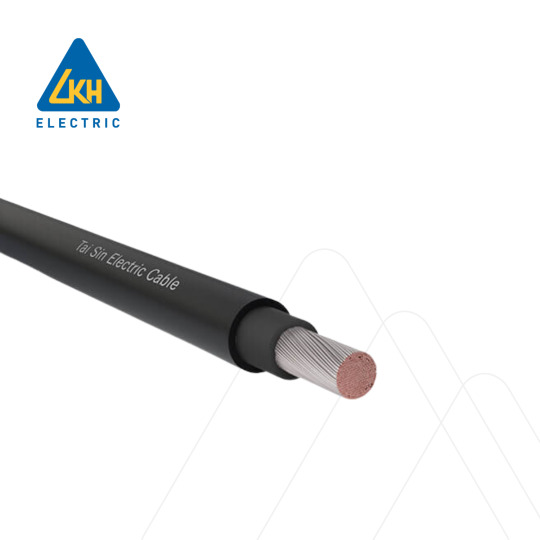
0 notes
Text
Solar Cable Manufacturers Online | Solar Cables & Connectors | LAPP India
Buy solar cables and connectors online from LAPP India. They are the best solar cable manufacturers that offer you best quality solar cables used in photovoltaic systems.
#cable#cables#power#control#olflex#solar#photovoltaic systems#PV#solar power#wind turbines#wind energy#wind farms#Olflex#solar plants#LAPP
0 notes
Text
Application scope of flexible mineral insulated cable
Flexible fireproof cables, also known as "inorganic mineral insulated cables", are developing rapidly in China because they are softer and easier to install and lay than mineral insulated cables.
Bttw copper core rolled copper sheath soft inorganic mineral insulated fireproof cable, rated voltage 750V. Yttw copper core rolled copper sheath soft inorganic mineral insulated fireproof cable, rated voltage 750V. Yttwg copper core smooth copper sheath flexible inorganic mineral insulated fireproof cable, rated voltage 500V. Yttwv rated voltage 750V copper core rolled copper sheath PVC outer sheath soft inorganic mineral insulated fireproof cable. Dw-yttwy copper core rolled copper sheath low-smoke halogen-free polyolefin outer sheath flexible inorganic mineral insulated solar cable, rated voltage 750V. Low installation cost: Due to advanced manufacturing technology and simple installation, under the same conditions, the overall cost of flexible fireproof cables is significantly lower than that of mineral insulated cables. Composition of flexible mineral insulated cables (bbtrz): flexible mineral insulated cables are composed of copper strands, mineral composite insulation and mineral composite sheath. It adopts a flexible structure, and the main material is inorganic materials, which makes up for the defects of hard structure, flammability and toxicity. It also has some advantages that other cables do not have, such as fire resistance, large carrying capacity, impact voltage resistance, mechanical damage resistance, halogen-free and non-toxic, explosion-proof, waterproof, corrosion resistance, long service life, safety, overload resistance, high temperature resistance ,low cost. Flexible mineral insulated cables (bbtrz) have general product characteristics. Since the insulation of wires and cables is made of organic polymer materials, it is easily carbonized under flame conditions and loses its insulation function. Since the main material of the flexible mineral insulated fireproof cable (BBTRZ) is composed of mineral compounds, it will not cause fire by itself, and cannot burn or support combustion. The melting point of these materials is generally above 1500°C, so the fireproof cable can still perform normal power transmission functions even in the presence of flames, and it is a real fireproof cable. The process structure of the flexible mineral insulated fireproof cable (bbtrz) is exactly the same as that of the traditional cable, successfully solving many shortcomings of the product determined by the production process of the magnesium oxide copper rod mineral insulated cable (bttz). Pros summary: Really flexible, construction is as soft as a normal cable. The process structure is the same as that of ordinary cables. The theoretical output is infinite, and a cable can be produced at a fixed length. There are no joints in the installation, the construction is simple, the reliability is improved, and the input cost is reduced. Multi-core can produce 300mm2, which overcomes the shortage of single-core rigid bttz greater than 25mm2. Cables are reusable. The cable can be removed and reused when the line is modified or adjusted.
0 notes
Text

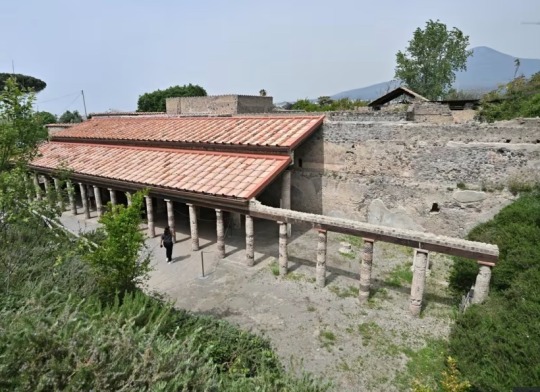
‘Ancient Roman’ Solar Roof Tiles Power Pompeii Villa
Ancient Roman ruins at Pompeii have been fitted with invisible solar panels, in a move that will contribute to the archaeological site’s sustainability efforts and cut costs. The innovative panels, which blend into the background by imitating traditional materials, were installed on the House of Cerere, on a thermopolium — a Roman snack bar — and on the House of the Vettii, which recently reopened following 20 years of restoration work.
“They look exactly like the terracotta tiles used by the Romans, but they produce the electricity that we need to light the frescoes,” said Gabriel Zuchtriegel, the director of the archaeological park of Pompeii, in a press release.
Each year, 3.5 million tourists explore the vast ruins of the ancient Roman city, which was buried by the eruption of Mount Vesuvius in 79 AD. But due to Pompeii’s size, energy bills are expensive and conventional methods of providing power across the site can threaten its appearance.

“Pompeii is an ancient city which in some spots is fully preserved,” Zuchtriegel said. “Since we needed an extensive lighting system, we could either keep consuming energy, leaving poles and cables around and disfiguring the landscape, or choose to respect it and save millions of euros.” The new technology will help the archaeological site to cut energy bills and make it more enjoyable, he added.
The invisible solar panels — or “traditional PV tiles” as they are technically known — were created by the Italian company Dyaqua. They can be designed to appear like stone, wood, concrete or brick, and hidden on walls, floors and roofs, according to Elisabetta Quagliato, whose family owns Dyaqua, in the press statement.
“We are an archaeological site but we also want to be a real-life lab for sustainability and the valorization of intangible heritage,” Zuchtriegel said. “Our initiative is not merely symbolic. Through the million tourists who visit us every year, we want to send a message to the world: cultural heritage can be managed differently and in a more sustainable way.”
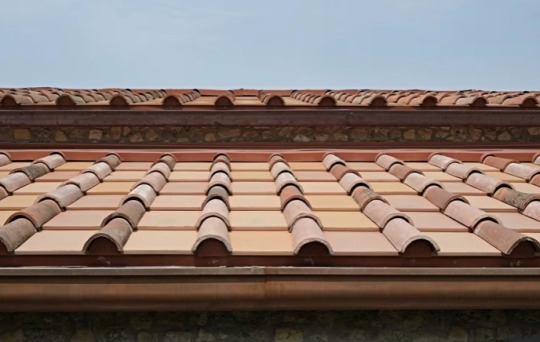

Other locations in Italy using the invisible solar technology are the commune of Vicoforte in Italy and, soon, Rome’s contemporary art museum Maxxi. Public buildings in Evora, Portugal, and Split, Croatia will also install the panels, according to the press statement.
Pompeii’s recent use of these panels is just the beginning, Zuchtriegel said. “From now on, we will be taking this solution into account for all future renovation and restoration projects.”
By Garry Shaw.



#‘Ancient Roman’ Solar Roof Tiles Power Pompeii Villa#House of Cerere#House of the Vettii#thermopolium#terracotta tiles#solar power#frescoes#mount vesuvius#ancient artifacts#archeology#archeolgst#history#history news#ancient history#ancient culture#ancient civilizations#roman history#roman empire#roman art
285 notes
·
View notes
Text
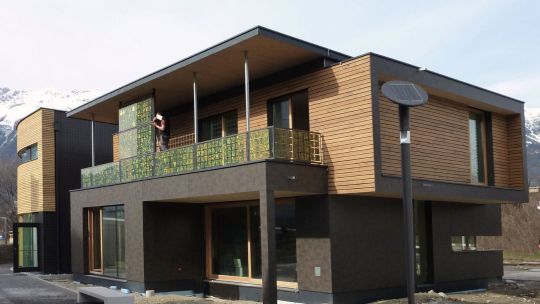
Solar balconies are booming in Germany
Solar balconies are a piece of the wider energy transition across Europe, explains Jan Osenberg, a policy advisor at the SolarPower Europe association.
“We see them as a subset of rooftop solar, but also as something different,” he tells Euronews Green. “We basically see it as a trend to use all possible artificial infrastructure for solar generation.”
Train tracks, motorways, carparks, car roofs, cemeteries and building facades… the list of structures getting a solar makeover goes on and on.
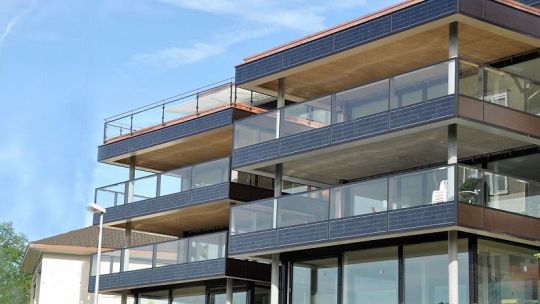
Plug & Play Kits
From a customer point of view, the main difference is that balcony PV is much easier to install. You can buy the kit online, and don’t need an electrician to set it up. Unlike for rooftop installations, where certified installers are recommended to avoid fire risks and damage to the structure.
In short: the panels are put on a mounting structure and attached via cables to an inverter that converts the electricity from DC to AC, which goes into your socket via a regular plug.

Who are solar balconies for?
“The main reason for the success of balcony solar systems is that it gives people the chance to use solar who weren’t able to use it before,” says a spokesperson for German manufacturer Meyer Burger.
“Most people don’t own a house, or they cannot install rooftop solar because of heritage protection, shading, or other constructional conditions of the roof. For them, balcony solar is appealing because they can use solar power to generate their own electricity and reduce their electric bills.”
#solarpunk#solarpunk business#solarpunk business models#solar punk#solar power#germany#balconey solar power kits#DIY solar#plug and play solar power#you don't need a roof
24 notes
·
View notes
Text
Understanding Industrial Solar Power Plants: Installation, Benefits, and Maintenance
Industrial solar power plants are revolutionizing the way industries source their energy. These systems are not just about cost savings but also represent a significant step toward reducing carbon footprints and embracing renewable energy. In this guide, we delve into the essentials of industrial solar power plants, focusing on their installation process, benefits, and maintenance requirements. KPI Green Energy Limited, a leading solar power company in Gujarat, is making strides in the renewable energy sector.

What Are Industrial Solar Power Plants?
Industrial solar power plants are large-scale solar energy systems designed to meet the high energy demands of industries and commercial establishments. These plants harness solar energy through photovoltaic (PV) panels or concentrated solar power (CSP) systems, converting sunlight into electricity. Unlike residential setups, industrial solar power plants are designed for heavy-duty usage, ensuring optimal efficiency and scalability for large-scale applications.
Installation of Industrial Solar Power Plants
The installation process of an industrial solar power plant involves several key steps:
Site Assessment and Feasibility Study: Before commencing with installation, careful examination would be conducted for the solar potential of the site with parameters being solar radiation levels, shading pattern, and actual area.
System Design and Planning: Engineers design their solar power system specifically keeping in mind the consumption, orientation of the panels, and local regulations, all based on the analysis findings.
Procurement of Components: High-quality components such as PV panels, inverters, mounting frameworks, and cables have been procured for increasing the longevity and performance of the system.
Installation and Commissioning: Installation and commissioning are done after acquiring all the components needed to assemble and test the system, which involves certain activities such as mounting the panels and wiring up the system to existing power grids or standalone setups-the final network.
Regulatory Approvals and Certification: It is before a plant becomes active that such approvals and certifications had to be obtained to meet the legal and environmental standards.
At KPI Green Energy, we execute precision at every stage of the installation process, employing advanced technology and expertise to ensure extremely efficient and sustainable solutions.
Benefits of Industrial Solar Power Plants
Cost Savings: Solar power plants significantly reduce electricity bills by utilizing free solar energy. Gradually the system pays for itself from the reduced energy costs over time.
Energy Independence: Industries depending on solar energy are less likely to be affected by increasing grid electricity prices and the sporadic power outage.
Environmental Impact: Solar energy is a clean and renewable source of energy. The industries taking the initiative to adopt solar energy can reduce greenhouse emissions by a drastic margin and can contribute to environmental conservation.
Government Incentives: Most of the governments, namely India, have made subsidies and tax benefits available to any industry adopting renewable energy solutions thereby making solar energy an option financially even viable.
Scalability and Versatility: Industrial solar power plants can be scaled up with the increasing energy demands in size and also be tailored for a specific application.
Addressing the Challenges of Solar Energy
While the benefits of solar energy are compelling, it’s essential to address its challenges:
Intermittency: Solar power always depends on the weather for energy outputs. Advanced batteries can help eliminate this limitation.
Initial Investment: The cost of building an industrial solar power plant is usually high at initial investment. However, in most cases, the long-term savings and incentives for such investment outweigh the costs.
Space Requirements: Solar power plants indeed require large spaces, an important constraint in areas that are highly populated or industrialized. KPI Green Energy develops small and efficient systems to utilize the space campus.
For more insights into overcoming these challenges, read our blog Challenges in Solar Energy and How to Overcome Them to gain valuable strategies for maximizing solar energy efficiency.
Solar Power Plant in Gujarat: A Growing Hub for Renewable Energy
Gujarat has become a leading state in India’s renewable energy revolution, thanks to its favorable policies and sunlight. KPI Green Energy, headquartered in Gujarat(Surat), is at the forefront of this transformation, delivering innovative solar solutions to industries across the state.
Our industrial solar power plants are tailored to meet the unique energy requirements of businesses, ensuring maximum efficiency and cost-effectiveness. Invest in such path-breaking technology and invest now with KPI Green Energy towards a sustainable vision of the future.
Maintenance of Industrial Solar Power Plants
Proper maintenance is crucial to ensure the longevity and efficiency of an industrial solar power plant. Here are key maintenance practices:
Regular Cleaning: Dust, dirt, and grime can all affect how well solar panels will work. Consistent cleaning helps keep energy absorption at maximum efficiency.
System Inspections: Scheduled checks can help qualify the possible defects to be diagnosed in terms of loose connectors, inverter defaults, or damaged components.
Performance Monitoring: Continued measurement in terms of real-time data monitoring of a solar plant through sophisticated software applications would enable synchronization in resulting energy output besides inefficiency identification.
Component Upgrades: The equipment might need upgrading from time to time for components like inverters that are no longer compatible with state-of-the-art technologies and to give enhancement for overall performance output.
Professional Maintenance Services: Partnering with a reliable service provider like KPI Green Energy ensures that all maintenance activities are conducted by trained professionals, minimizing downtime and maximizing efficiency.
For more tips on maintaining your solar power plant, check out our blog Optimizing Solar Power Plant Efficiency.
Conclusion
Industrial solar power plants are a cornerstone of the transition to renewable energy, offering industries a sustainable, cost-effective, and reliable energy solution. By addressing challenges such as intermittency and maintenance, companies can unlock the full potential of solar energy. Gujarat, with its proactive renewable energy initiatives, is leading the way, and KPI Green Energy stands as a trusted partner in this journey.
Whether you’re planning to install a new system or enhance the performance of an existing one, KPI Green Energy’s expertise and commitment to innovation make it the ideal choice for your renewable energy needs. Together, let’s pave the way for a greener, more sustainable future. You can directly Contact us for more information on any Renewable energy asset.
Related blogs
Solar Power Plants Vs. Traditional Energy Sources
5 Smart Ways To Invest In Solar Energy: Key Benefits For 2024
0 notes
Text
TE Connectivity offers a wide range of connector cables designed for various industries, including industrial automation, transportation, consumer electronics, medical devices, and renewable energy. These cables, paired with TE’s connectors, provide reliable, high-performance solutions for power, data, and signal transmission in demanding environments.
Applications of TE Connector Cables
1. Industrial Automation
Sensor and Actuator Connections: TE cables are used to link sensors and actuators to control systems, ensuring precise data and power transfer.
Robotics: Facilitate signal and power connections in robotic arms, motion control systems, and vision systems.
Distributed Control Systems (DCS): Provide robust and reliable connections between distributed I/O devices and controllers.
2. Automotive and Transportation
Vehicle Electronics: TE connector cables are used for in-vehicle networking, connecting ECUs (Electronic Control Units), sensors, and actuators.
Electric Vehicles (EVs): Provide connections for battery management systems (BMS), charging ports, and high-voltage power systems.
Railways and Aerospace: Rugged cables ensure reliability under high-vibration and extreme environmental conditions.
3. Medical Equipment
Patient Monitoring Devices: Deliver accurate signal transmission in diagnostic and monitoring devices.
Imaging Systems: Provide high-speed data transmission for devices like MRI and CT scanners.
Wearable Medical Devices: Offer lightweight and compact connections for portable and wearable technologies.
4. Consumer Electronics
Home Appliances: TE cables connect sensors, motors, and controllers in smart home devices and appliances.
Computing and Communication: Used in high-speed data connections for networking equipment, laptops, and mobile devices.
5. Renewable Energy
Solar Power: Provide durable connections for photovoltaic (PV) panels, inverters, and monitoring systems.
Wind Energy: Ensure reliable power and data connections in wind turbine control systems and monitoring sensors.
6. Data Centers and Telecommunications
High-Speed Networking: TE’s connector cables support high-speed Ethernet, fiber optics, and other data transmission technologies in servers and communication infrastructure.
Power Distribution: Deliver efficient power connections in data centers.
7. Harsh Environment Applications
Oil and Gas: Resistant to high temperatures, chemicals, and corrosive environments.
Military and Defense: Rugged cables provide reliable connections in critical applications like communication systems and unmanned vehicles.
Key Features of TE Connector Cables
Durability: Withstand mechanical stress, temperature extremes, and environmental factors like moisture and dust.
High-Speed Data Transfer: Support modern communication protocols and IoT applications.
Compact and Modular Design: Ideal for space-constrained applications.
Wide Range of Options: Available in various lengths, materials, and connector types to meet specific requirements.
Environmental Protection: IP-rated options ensure performance in harsh environments.
Popular TE Connector Cable Types
M8/M12 Connector Cables: Widely used in industrial automation for compact and reliable connections.
Circular Connector Cables: For robust connections in outdoor and industrial applications.
Rectangular Connector Cables: Used in power and signal connections for modular equipment.
Fiber Optic Cables: For high-speed data transmission in telecommunications and data centers.
Power and Signal Cables: Designed for high-current and mixed signal applications in EVs and industrial systems.
Conclusion
TE connector cables are designed to deliver reliable, high-performance connections across a diverse range of industries. Their robustness, versatility, and compatibility with modern technologies make them a preferred choice for applications demanding durability, precision, and efficiency.
1 note
·
View note
Photo

Mecer Solar 330W PV Module Products Characteristics: Widely using the most popular and mature type of modules for on-grid systems. Leading manufacturing technology in the PV industry, strictly controlling the quality of raw materials and the process of producing 100% EL inspection, ensures modules are defects free. Cells binned by current to improve module performance Anti-reflective glass. Not only to increase the light absorption but also to make the module has the function of self-cleaning in water environment, effectively reducing the power loss caused by dust. Outstanding performance in low-light irradiance environments. Excellent mechanical load resistance: Certified to withstand high wind loads(2400pa) and snow loads(5400pa). High salt and ammonia resistance Positive power tcierance:0-+Sw Raw materials and Mechanical Parameters: Type of Cells(mm): poly156.75 x 156.75 NO. of Cells and Connections: 6x12=72 Dimensions(mm)(L*W*H): 1956 X 992 x40 Weight(kg): 22.8 Glass: 3.2mmTempered Glass Encapsulation: EVA Backsheet: Multilayer Composite Aluminium-Frame: Silvery/Black Anodized aluminium alloy Junction-Box: IP67/IP68 Cable: 4mm',900mm Connector: MC4 and MC4 Compatible Package Configuration: 26pcs/pallet SP-330 Performance Parameters: Maximum System Voltage: 1000V Operating Temperature: -45-+so·c Maximum Series Fuse: 20A SP-310 SP-315 SP-320 SP-325 SP-330 SP-335 Maximum Static Load, Front Side (e.x. Snow, Wind): 5400PA Maximum Static Load, Back Side (e.x. Wind): 2400PA Application Grade: Class A Electrical Parameters (Standard Test Condition): Rated Maximum Power (Mp): 330W Power Tolerance: 0-+ 5W Cell Efficiency: 18.7% Open Circuit Voltage (Voc): 47.0V Maximum Power Voltage (Vmp): 37.5V Short Circuit Current (lsc): 9.38A Maximum Power Current (lmp): B.B9A Temperature Coefficient of lsc: +0.06% Temperature Coefficient of Voe: -0.33% Temperature Coefficient of Pmp: -0.45% Standard Test Condition: lrradiance: 1000W/M2, Cell Temperature:25'C, SpectrumAM:1.5 The Electrical Parameters of the module are the average theory figure under the standard test condition, each one exists difference. Can not be treated as the basis of module delivery.
0 notes
Text
Photovoltaic Solar (PV) Cable Market Growth and Status Explored in a New Research Report 2032
Market Overview: Photovoltaic Solar (PV) Cable Market Overview: The photovoltaic solar (PV) cable market refers to the industry involved in the production and distribution of cables specifically designed for solar power systems. These cables are used to connect solar panels, inverters, and other components of photovoltaic systems, enabling the transmission of DC power generated by solar panels to the grid or batteries.
The global solar photovoltaic (PV) market was estimated at USD 159.84 billion in 2021 and is predicted to hit over USD 250.63 billion by 2030 and poised to grow at a CAGR of 5.1% during the forecast period 2022 to 2030.
Key Factors Driving the Market:
Increasing Adoption of Solar Power: The global shift towards renewable energy sources, particularly solar power, is a key driver for the PV cable market. Governments, organizations, and individuals are increasingly investing in solar installations to reduce reliance on fossil fuels and mitigate environmental impacts.
Favourable Government Policies: Supportive government policies and incentives, such as feed-in tariffs, tax credits, and renewable energy targets, have encouraged the adoption of solar power systems. These policies stimulate the demand for PV cables as more solar installations are deployed.
Declining Solar Panel Costs: The declining cost of solar panels has made solar power more economically viable, leading to increased installations. As the solar market expands, there is a growing demand for PV cables to connect these panels and ensure efficient power transmission.
Technological Advancements: Continuous advancements in PV cable technology have resulted in the development of cables that offer improved performance, higher efficiency, and enhanced durability. These technological advancements drive the market by meeting the evolving needs of solar power systems.
Rising Awareness of Climate Change: Increasing awareness about climate change and the need to reduce greenhouse gas emissions have propelled the demand for renewable energy sources like solar power. This growing awareness and concern contribute to the demand for PV cables.
Demands:
Solar Power Installations: The continued growth in solar power installations, both at the utility-scale and residential level, creates a significant demand for PV cables. The increasing number of solar projects drives the need for cables to connect and transmit power within these systems.
Grid Integration: Integration of solar power into the electrical grid requires the use of PV cables to connect solar farms and rooftop solar installations to the grid infrastructure. As grid integration of solar power expands, the demand for PV cables increases.
Residential and Commercial Applications: The adoption of solar panels in residential and commercial buildings for on-site power generation drives the demand for PV cables. These cables are necessary to connect solar panels to inverters and other components within the premises.
Energy Transition Initiatives: Many countries and organizations have set ambitious targets to transition to a clean energy future. These energy transition initiatives drive the demand for PV cables as solar power plays a crucial role in achieving renewable energy goals.
Maintenance and Replacement: As the installed base of solar power systems ages, there will be a need for maintenance and replacement of PV cables. This ongoing requirement for cable replacements contributes to the market demand.
Overall, the photovoltaic solar cable market is driven by the increasing adoption of solar power, favourable government policies, declining panel costs, technological advancements, and growing awareness of climate change. The demand for PV cables is expected to continue growing as solar installations expand and renewable energy becomes a dominant source of power generation.
By visiting our website or contacting us directly, you can explore the availability of specific reports related to this market. These reports often require a purchase or subscription, but we provide comprehensive and in-depth information that can be valuable for businesses, investors, and individuals interested in this market.
“Remember to look for recent reports to ensure you have the most current and relevant information.”
Click Here, To Get Free Sample Report: https://stringentdatalytics.com/sample-request/photovoltaic-solar-(pv)-cable-market/7485/
Market Segmentations:
Global Photovoltaic Solar (PV) Cable Market: By Company
• Nexans
• Eland Cables
• LAPP
• Alfanar
• Shanghai Kuka Special Cable Co., Ltd
• BAHRA ELECTRIC
• Service Wire
• Top Cable
• Caledonian Cable
• JZD Wire & Cable Factory
• Jinyou Cable
Global Photovoltaic Solar (PV) Cable Market: By Type
• Single Core
• Multi Core
Global Photovoltaic Solar (PV) Cable Market: By Application
• Independent PV
• Grid-connected PV
Global Photovoltaic Solar (PV) Cable Market: Regional Analysis
All the regional segmentation has been studied based on recent and future trends, and the market is forecasted throughout the prediction period. The countries covered in the regional analysis of the Global Photovoltaic Solar (PV) Cable market report are U.S., Canada, and Mexico in North America, Germany, France, U.K., Russia, Italy, Spain, Turkey, Netherlands, Switzerland, Belgium, and Rest of Europe in Europe, Singapore, Malaysia, Australia, Thailand, Indonesia, Philippines, China, Japan, India, South Korea, Rest of Asia-Pacific (APAC) in the Asia-Pacific (APAC), Saudi Arabia, U.A.E, South Africa, Egypt, Israel, Rest of Middle East and Africa (MEA) as a part of Middle East and Africa (MEA), and Argentina, Brazil, and Rest of South America as part of South America.
Visit Report Page for More Details: https://stringentdatalytics.com/reports/photovoltaic-solar-(pv)-cable-market/7485/
Reasons to Purchase Photovoltaic Solar (PV) Cable Market Report:
• To obtain insights into industry trends and dynamics, including market size, growth rates, and important factors and difficulties. This study offers insightful information on these topics.
• To identify important participants and rivals: This research studies can assist companies in identifying key participants and rivals in their sector, along with their market share, business plans, and strengths and weaknesses.
• To comprehend consumer behaviour: these research studies can offer insightful information about customer behaviour, including preferences, spending patterns, and demographics.
• To assess market opportunities: These research studies can aid companies in assessing market chances, such as prospective new goods or services, fresh markets, and new trends.
• To make well-informed business decisions: These research reports give companies data-driven insights that they may use to plan their strategy, develop new products, and devise marketing and advertising plans.
In general, market research studies offer companies and organisations useful data that can aid in making decisions and maintaining competitiveness in their industry. They can offer a strong basis for decision-making, strategy formulation, and company planning.
About US:
Stringent Datalytics offers both custom and syndicated market research reports. Custom market research reports are tailored to a specific client's needs and requirements. These reports provide unique insights into a particular industry or market segment and can help businesses make informed decisions about their strategies and operations.
Syndicated market research reports, on the other hand, are pre-existing reports that are available for purchase by multiple clients. These reports are often produced on a regular basis, such as annually or quarterly, and cover a broad range of industries and market segments. Syndicated reports provide clients with insights into industry trends, market sizes, and competitive landscapes. By offering both custom and syndicated reports, Stringent Datalytics can provide clients with a range of market research solutions that can be customized to their specific needs
Contact US:
Stringent Datalytics
Contact No - +1 346 666 6655
Email Id - [email protected]
Web - https://stringentdatalytics.com/
0 notes
Text
Understanding On-Grid Solar Systems: A Complete Guide

India, with its abundant sunlight, is witnessing a transformative shift toward renewable energy sources. Among these, solar energy has emerged as a frontrunner, with increasing adoption driven by environmental awareness and cost savings. For households and businesses alike, on-grid solar systems present a powerful solution to meet energy needs efficiently. This guide explores everything you need to know about on-grid solar systems, from how they work to the benefits they offer.
Solar Energy in India
India has achieved significant milestones in harnessing solar power, thanks to ambitious government initiatives like the PM Surya Ghar Yojana. The country's solar power capacity has reached over 70 GW (as of 2024), with rooftop solar systems playing a vital role. With abundant sunshine for most of the year, investing in solar energy is both a sustainable and economical choice for Indian consumers.
What is On-Grid Solar?
An on-grid solar system, also known as a grid-tied system, is connected directly to the local electricity grid. Unlike off-grid systems, it does not rely on battery storage. This type of solar plant is ideal for urban households, businesses, and industrial units that aim to reduce electricity costs while contributing to a greener environment.
How Does It Work? The Complete Flow
Solar Panels Capture Sunlight: Photovoltaic (PV) panels absorb sunlight and convert it into direct current (DC) electricity.
Inverter Converts Electricity: The DC power is sent to an inverter, which converts it into alternating current (AC) for household use.
Grid Connection: Any excess power generated is fed back into the local grid, and you receive credit for this through net metering.
Electricity Usage: When your solar system produces less power than required, you can draw electricity from the grid, ensuring an uninterrupted supply.
This seamless flow ensures maximum efficiency and consistent power availability.
Components of an On-Grid Solar System
Solar Panels: The heart of the system, capturing sunlight to generate power.
Inverter: Converts DC to AC power for practical use.
Net Meter: Tracks energy sent to and drawn from the grid.
Mounting Structures: Supports and secures the panels in optimal positions.
Cables and Wiring: Ensures efficient power transmission.
Benefits of On-Grid Solar Systems
Cost Savings: Reduces electricity bills significantly by offsetting grid consumption.
Minimal Maintenance: No need for batteries, lowering maintenance costs.
Environmental Impact: Reduces carbon footprint by promoting clean energy.
Government Incentives: Benefit from subsidies and tax rebates.
Scalability: Easily expandable to meet increasing energy demands.
Installation Process
Site Assessment: A solar panels installation company evaluates your rooftop or ground space for feasibility.
System Design: The system is customized to match your energy requirements and site conditions.
Procurement and Installation: Solar EPC (Engineering, Procurement, and Construction) teams ensure proper setup.
Testing and Commissioning: The system is tested for efficiency and connected to the grid.
Net Metering Setup: Enables credit for surplus energy fed back to the grid.
Subsidy on On-Grid Solar
The Indian government offers attractive subsidies for rooftop solar installations to encourage adoption. Here’s a snapshot of the subsidy benefits:

Subsidy amounts vary by state and capacity, making on-grid solar systems a lucrative investment for homeowners and businesses.
Conclusion
With its potential for energy savings and environmental benefits, an on-grid solar power plant is a smart choice for anyone looking to optimize their electricity usage. From substantial savings on utility bills to government-backed incentives, the advantages of switching to solar are undeniable. Collaborate with a trusted solar panels installation company or solar EPC provider to start your journey toward a sustainable and cost-effective energy solution.
#solar#solar panels#solarcompany#solarenergy#solarforhome#ongridsolar#investment#solar epc company#rooftop solar#energysavings#pm surya ghar muft bijli yojana#solar power#residential solar
0 notes
Text
0 notes